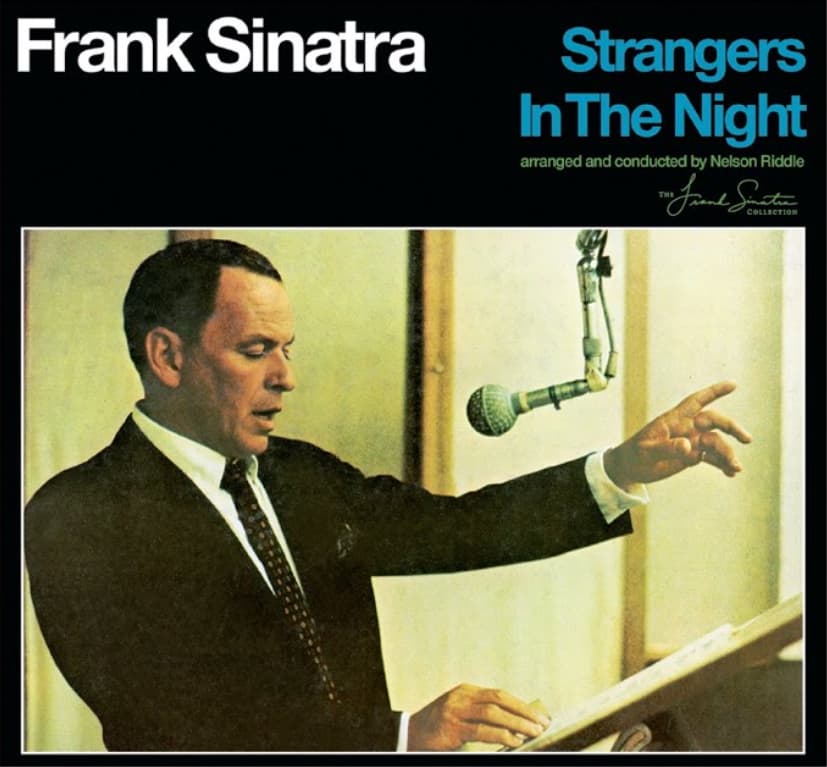
An iconic ballad of unexpected love and fleeting encounters
There’s a certain magic to the music of a bygone era, a timeless quality that resonates deeply with those who’ve lived through it. One name, more than any other, stands as a titan of this golden age: Frank Sinatra. His voice, a velvet-smooth instrument of unparalleled power and emotion, has soundtracked countless memories—first dances, late-night reflections, and the bittersweet ache of a love lost or found. Among his vast repertoire, one song holds a particularly special place: “Strangers in the Night.” It’s a tune that, upon its release in 1966, was an immediate sensation, a nostalgic and romantic ode to a chance encounter that forever changes two lives.
Released as a single in April 1966, the song quickly climbed the charts, a testament to its universal appeal. It became a global phenomenon, reaching the number one spot on the Billboard Hot 100 and the UK Singles Chart, a remarkable achievement for an artist who had been a star for decades. The song’s success was so significant that it marked a major comeback for Sinatra, proving his enduring relevance in a music scene increasingly dominated by rock and roll. It was the lead track on the album of the same name, Strangers in the Night, an album that also topped the charts and earned him two Grammy Awards, including Record of the Year. The sheer scale of its success cemented the song’s place in popular culture, making it an essential part of the American songbook.
The story behind the creation of “Strangers in the Night” is as fascinating as the song itself. The melody was composed by the German songwriter Bert Kaempfert, originally titled “Beddy Bye” and intended for the movie A Man Could Get Killed. However, the song was initially a lyrical afterthought, with various writers attempting to craft a suitable story. Ultimately, the lyrics penned by Charles Singleton and Eddie Snyder were chosen, perfectly capturing the poignant and evocative mood of Kaempfert’s melody. Yet, for all its success, Sinatra himself was never particularly fond of the song. He reportedly referred to it as a “piece of junk” and even at times, he would mockingly sing the iconic “dooby-doo-be-doo” line in his later performances. This sentiment, however, was never shared by his audience, who embraced the song wholeheartedly as a classic. It’s a classic example of an artist’s personal taste being at odds with the public’s affection for a particular work, a common enough occurrence but one that seems almost unbelievable given the song’s timeless beauty.
At its core, “Strangers in the Night” is a reflection on the magic of serendipity and the profound impact of a single, fleeting moment. It speaks to the universal human experience of meeting someone new and feeling an instant, undeniable connection. The lyrics paint a picture of two people, both alone and seemingly disconnected from the world, whose lives intersect by chance one night. As the night unfolds, they realize that they’re not really strangers at all; their souls were destined to meet. The song masterfully captures that transformative moment when a casual glance turns into a shared smile, and a simple conversation blossoms into something far deeper. It’s a tale of hope, of the belief that love can appear when you least expect it, emerging from the shadows of loneliness to illuminate your life. For many older listeners, the song evokes memories of their own youthful encounters, of a time when a chance meeting in a dimly lit bar or on a moonlit street could be the beginning of a lifelong love story. It’s a bittersweet and beautiful song, a reminder that even in a world full of strangers, the right one is often just a night away.